Eva Milka first came to Ireland from Poland in 2005 to work in the hospitality industry. With her then partner, a Polish-born chef, she began growing snails in 2011 as a hobby in their one-bedroom apartment in Kilkenny. "People laughed at us and some still do but I love snails," she says.
However turning snail production into a business was a steep learning curve. “We thought we could copy and paste the breeding techniques from Poland where snails have been grown successfully for 20 years but the Polish, French and Italian methods didn’t work here because the climate is completely different in Ireland,” explains Milka.
Through trial and error, Milka realised that for snails to be ready for market in September, she needed to start breeding in January. She and her now-partner, Eoin Jenkinson, a third-generation baker from Skerries, take me to visit the "love loft" where 20,000 snails are breeding on tables in a shed on a farm in County Carlow.
“We water and feed them every day and they lay their eggs in pots. We then harvest the eggs into incubation trays. We put these trays in the incubation room for 15 days at 20 degrees Celsius,” explains Milka.
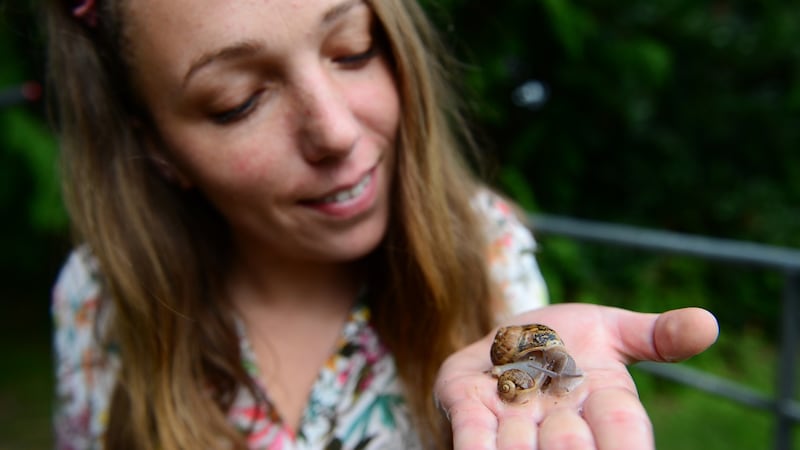
Once the snails hatch out, they are kept on tables in a polytunnel for 4 to 8 weeks, from where they are transferred to plots in a field. “We have half an acre, divided into 10 sections where we sow vegetarian for the fattening stage,” explains Milka. Land predators are kept away with corrugated iron fencing and netting over the plot keeps the birds out.
Milka and Jenkinson produce five tonnes (600,000 snails) on their half acre plot each year. Most of the snails are sold to France, Italy and Spain with only two per cent sold on the Irish market as Gaelic Escargots in brine or marinated with chilli and garlic. Milka is now keen to develop new markets for her snails in Dubai and Singapore.
In the last few years, Milka scaled back production from one acre so that she could concentrate on developing a distribution hub for more than 10 other snail farmers throughout Ireland. Since 2016, she has also trained would-be snail farmers on one-day courses held throughout the year. Milka estimates the start-up costs for a snail farmer to be about €20,000, which includes a polytunnel, fencing and nets.
She sees snail farming as a good option for innovative farmers. “Snail meat is high in protein and low in fat. Global warming is working in our favour because there are warmer nights in the summer time now in Ireland and it’s becoming too hot to grow snails in Spain and Italy.”
The hemp farmer
In 2011, Ed Hanbidge gave up his job in Dublin and returned to live close to his family's sheep and cattle farm near Kiltegan, County Wicklow. "I got tired of commuting to work. I then worked locally at the cattle mart and installing stoves but I came back to help on the farm after a fire burned down a sheep shed and some machinery in November 2014," explains Hanbidge.
After that he decided to continue working on the farm with his father and brother and converted 50 hectares of the 222 hectare farm to organically rear 40 Dexter cattle and 120 Cheviot ewes. In 2015, he planted his first crop of hemp.
Best known as the plant which produces cannabis, hemp has many other uses and only varieties with less than 0.2 per cent of tetrahydrocannabinol (THC) – one of the main psychoactive ingredients found in cannabis plants – can be legally grown here. Even then, farmers require a licence from the Health Products Regulatory Authority to grow these varieties which are tested by Department of Agriculture officials to verify the low concentrations of THC.
Hanbidge says, “I talked to people who were growing hemp for fibre and for juice and grew the crop for fibre for two years. I sold some of it for juice and 60 bales for building materials but it wasn’t too lucrative,” he explains.
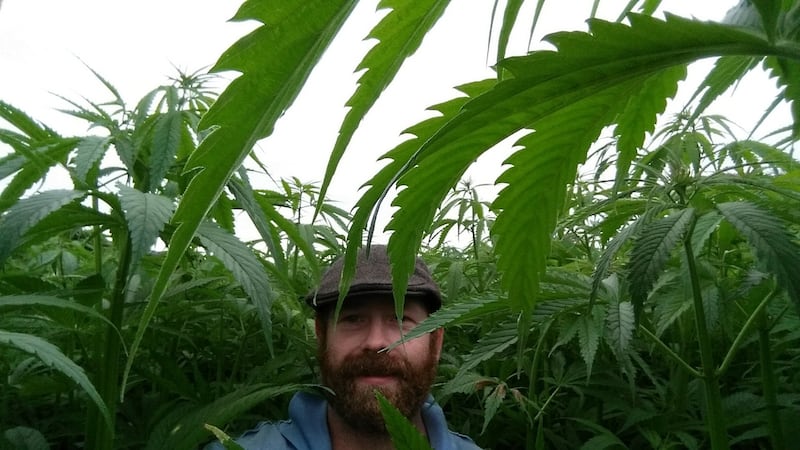
In 2017, Hanbidge switched to a different variety of hemp to harvest the flowers for cannabidiol (CBD) oil – a food supplement which is becoming popular as a [non-medical] treatment for epilepsy, anxiety and pain conditions. He also grew another crop of hemp in a separate plot to harvest the seed for hemp seed oil and milled hemp, both of which are used as food condiments.
“Hemp grows well here. We’ll plant at the end of April this year and harvest the flowers at the end of July. We’ll harvest the seed later on another part of the farm,” he explains. Hanbidge believes hemp offers farmers an opportunity to grow another protein sources and reduce their cattle numbers.
Having sold on both the flowers and the seeds for production, he now hopes to set up drying facilities for the flowers so that he can make the CBD oil on the farm. He already sells hemp seed oil, the milled hemp and CBD oil directly from the farm.
Ed's brother, Spencer, believes there are also opportunities to develop products such as hemp milk and hemp tofu. He tasted hemp tofu on a visit to China where hemp is grown both for fibre and for food. Meanwhile, Ed is so passionate about his hemp crop that he plans to build a hemp house for himself, his wife and their three children.
Medicinal herbs
Bord na Móna grew its first crop of medicinal herbs on cutaway bogs in County Offaly in 2019. The project is part of the semi-state company's aim to create alternative jobs for seasonal workers (mainly small farmers) who worked on peat production every summer.
“We hope to employ – or redeploy – up to 120 workers within five years of growing medicinal herbs. Last year, we planted about 60,000 herbs and former peat harvesters were trained to plant and maintain them,” explains Derbháil Ní Chualáin, Bord na Móna’s programme manager for innovations including a freshwater fish farm, a project to extract sap from birch trees for birch water and the medicinal herbs.
In 2020, medicinal herbs including peppermint, spearmint, lemon balm calendula, yarrow, angelica, camomile, echinacea, valerian and marshmallow will be sown in the cutaway bogs.
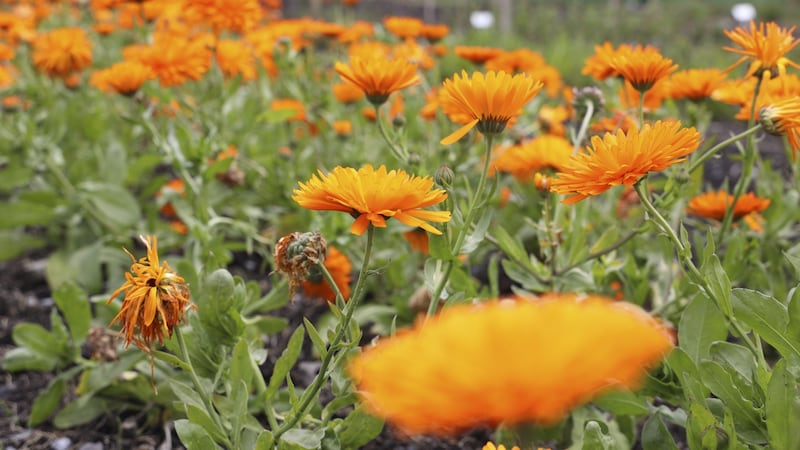
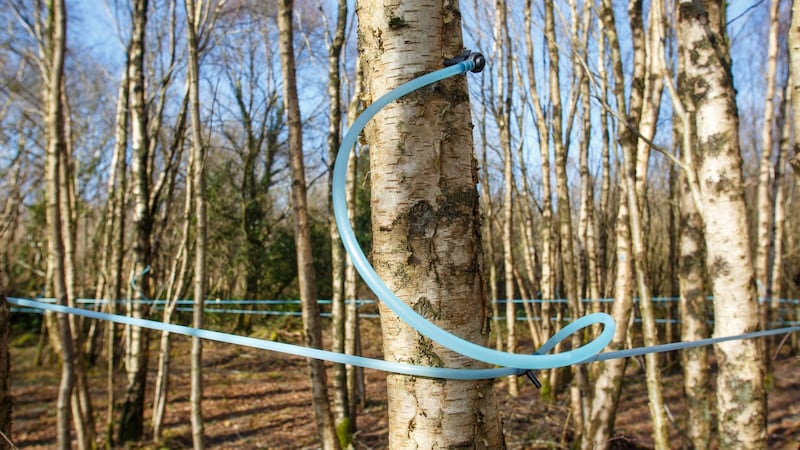
"Our primary market will be Germany, Switzerland and Italy but medical herbalists in Ireland have also approached us because there is a shortage of certified organic herbs here too. The great thing is, we are growing these herbs on land that was never used for agriculture or intensive industry," explains Ní Chualáin.
The birch water – sold as a health drink in Scandinavian countries – will be extracted from the sap of 20-year-old birch trees already growing on the bog.
"Birch trees are the first trees to naturally colonise on boglands and we are currently testing the market for this crisp, refreshing drink, which is filtered and treated with UV light (to remove microbes) before being bottled," explains Ní Chualáin. Meanwhile, the perch and trout farm project in deep ponds at Mount Lucas in County Offaly is another business in the making.
An urban farm
Not a farm in the conventional sense, this herb-growing enterprise which began in 2019 is situated in an industrial unit in North Dublin. Based on the principle of hydroponics (where plants grow on vertical shelves with their bare roots in nutrient-enriched water), this insulated temperature controlled environment is the equivalent to two hectares (five acres) of horticultural land.
"It's a test farm. Our business is selling technology, not the produce," explains Dan O'Brien, one of the three entrepreneurs behind Farmony. Currently, the produce from Farmony is donated as trials of different herbs are tested for potential customers.
Before entering the sealed unit, I have to put on black plastic clogs and a white coat. Rows of shelves filled with basil and coriander fill the space when I visit, with each shelf full of herbs lit from above with strips of LED lighting and fed from below with nutrient-enriched water.
"There is nothing new about hydroponics. They date back to the hanging gardens of Babylonia. There are large-scale farms across America including one in the Las Vegas desert. There are community-based hydroponic [also known as vertical] farms in Berlin and in England," explains O'Brien. Even Belvedere College in Dublin has its own small vertical farm.
It takes about four weeks for the seedlings to grow into full sized herbs. In contrast, the micro greens (eg pea shoots or sunflower shoots) or miniature herbs take less than two weeks to grow in these controlled conditions. Each seed is grown in a mixture of peat and fibre in a tiny container which – once the seedling emerges – is put into its slot on a shelf.
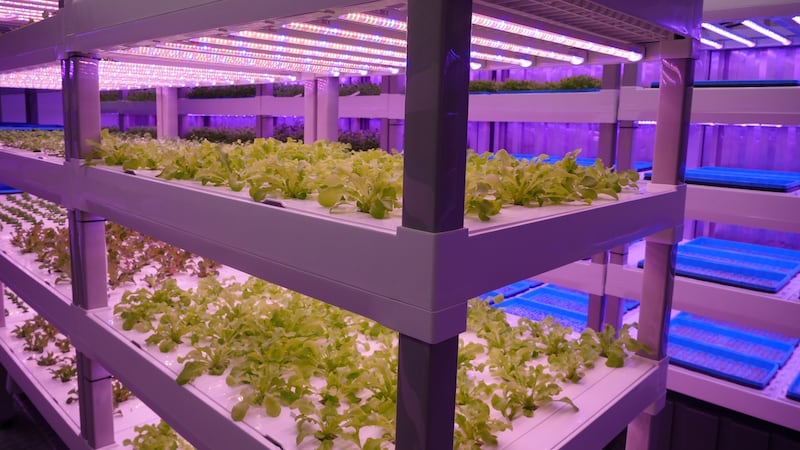
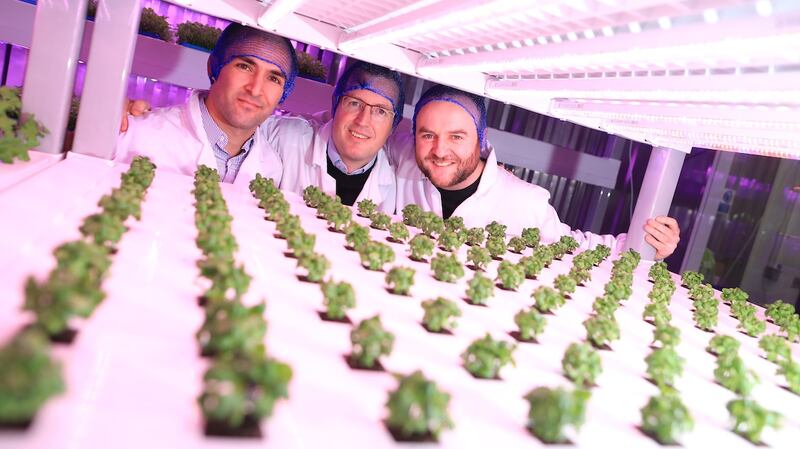
According to O’Brien, up to 200 different crops (including arugula, celery, corn shoots, fennel, lemon balm, radishes, scallions, mint, watercress and various lettuces) can be grown all year round in these controlled conditions with not a concern for variable weather conditions or infestations of insects. Nutrients are added to sterilised water but no herbicides or pesticides are necessary.
“The only contaminant we have is algae which grow in the gaps between the shelves. We steam clean the shelves to get rid of it,” explains Danko Tolic, Farmony’s head grower.
John Paul Prior, Rodrigo Andrade and O'Brien, who have plans to set up Farmony units in Poland, England and Northern Europe in the next few years, are hoping that farmers, restaurant owners and others will buy their expertise and experience. "It's a sustainable predictable income for farmers which is transferable to farms, cities and communities," says O'Brien.
An individual unit with three layers of shelving, water tank, pumps, trays and your first crop costs €2,000. Horticulturalists, beef farmers or mushroom growers keen to diversify are potential customers.
Currently in Ireland, a high percentage of herbs are sourced outside of Ireland – particularly in the winter months. Hydroponically-grown herbs could be grown close to urban centres for sale to shops and restaurants. “You can grow to order so there’s no wastage,” says O’Brien.
















